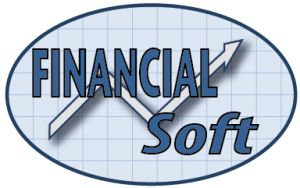Current Ratio
|
Important Terms
|
|
The important financial terms found in this equation that need to be understood to fully comprehend this equation are… |
|
Assets |
|
|
Assets are Balance Sheet entries reflecting the value of anything owned by a business that could be converted to cash. This would include money that is owed to the business including money owed by clients or customers that have received services but have not paid yet. |
|
Cash |
|
|
The legal tender that is liquid, including bank accounts, petty cash, and marketable securities, such as government bonds and banker’s acceptances. |
|
Receivables |
|
|
|
Receivables, also known as Accounts Receivables or AR, are assets on the balance sheet that represent what your clients or customers owe you for services provided. Here is a good way to think about Receivables … If a business receives payment for services at the time of service, they have no receivables. But if the business does not collect payment at the time services are provided, clients may pay at a later time, thus creating a receivable for the business. |
| |
Inventory |
|
|
The stored goods used in your business to service or sell to your customers. |
|
Current Assets |
|
|
Current Assets are assets that can be converted to cash most readily. In this case it is Cash plus Receivables plus Inventory. |
|
Liabilities |
|
|
|
Liabilities are Accounts on the balance sheet that represent what you currently owe to others i.e. outstanding loans, what is owed to your suppliers. |
|
Payables |
|
|
Payables, also known as Accounts Payables or AP, are an account that represents monies that a business owes to suppliers for products and services purchased on short-term credit that are used for sale to customers or clients. This would include inventory items for sale or use for outside services. Accounts Payable would be what is owed to the supplier of these items. Items not considered Payables are money owed for products or services that are not directly used in customer or client transactions such as office supplies, utilities, rent… These obligations are listed on the Balance Sheet as “Current Liabilities.” The liabilities can be for fixed assets as well as consumable products or services or raw materials for a product’s manufacturing. This is a very important account as it pertains to Cash Flow and is thus an important element of the Cash Conversion Cycle. |
|
Current Liabilities |
|
|
Current Liabilities are the most immediately liabilities which in this case is Payables plus Short term loans. |
| The Equation |
|
The Current Ratio is a ratio created when your current assets are divided by your current liabilities. In addition to the definition of Assets above, current assets are defined as assets that can easily be converted to cash. These balance sheet accounts would include assets such as cash, receivables, and inventory. In the denominator of the current ratio the current liabilities represent liabilities on your balance sheet that are bills or debts that will be due in their entirety within 12 months. |
 |
| What it means |
|
The current ratio itself is a measure of business liquidity which is the ability to pay off short-term loans. A Creditor may use this ratio among other things to determine whether to grant a loan to a business because it is an indication of their ability to pay a loan. A creditor like a bank certainly does not want to grant a loan to a business that has a poor current ratio. A ratio of one or below would be concerning because that would mean your current liabilities are greater than your current assets so paying your bills and loans would be difficult and granting an additional loan would add to the problem. |
| Why it is important |
|
First of all, it tells you your own capabilities for paying your bills and debts. Knowing your ratio, combined with the unique colored alert system in Profit Gap will give you the tools you need to analyze internal routines and correct problems to avoid cash shortages. Having a high current ratio improves the business’s ability to weather difficult financial times by borrowing money to cover that time and ensure continuity with your ability to pay expenses and payroll. |

